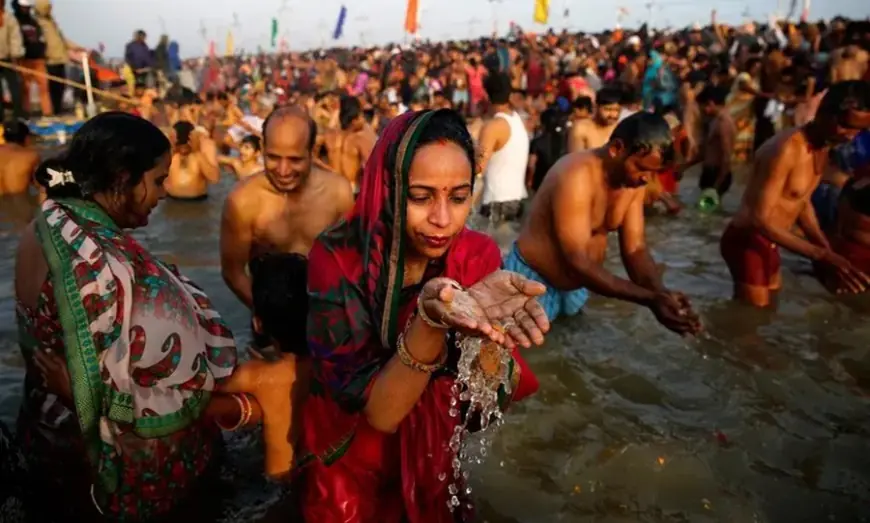Kumbh Mela Tour: A Spiritual Journey to the World's Largest Religious Gathering
Embark on a spiritual journey with the Kumbh Mela tour, the world's largest religious gathering. Experience sacred rituals, cultural traditions, and the power of devotion at India's most iconic pilgrimage sites.

The Kumbh Mela is one of the most significant and awe-inspiring religious events in the world, drawing millions of pilgrims and spiritual seekers from across the globe. Held every twelve years in four cities in India—Allahabad (Prayagraj), Haridwar, Nashik, and Ujjain—the festival is an extraordinary display of devotion, faith, and culture. A Kumbh Mela tour offers travelers an unparalleled experience to witness spiritual rituals, participate in sacred baths, and immerse themselves in India's rich religious heritage. Here’s a closer look at what makes the Kumbh Mela tour an unforgettable journey.
1. The Significance of Kumbh Mela
The Kumbh Mela traces its roots to ancient Hindu mythology, specifically the legend of the "Samudra Manthan" (churning of the ocean). It is believed that during this event, the gods and demons fought for the nectar of immortality (amrit), and as they struggled, a few drops of the nectar fell at four places—Allahabad, Haridwar, Nashik, and Ujjain—making these cities sacred pilgrimage destinations. The Kumbh Mela is thus a celebration of spiritual purity and a time for devotees to bathe in the holy waters to cleanse themselves of sins.
2. The Experience of a Kumbh Mela Tour
A Kumbh Mela tour is an immersive experience that goes beyond sightseeing. The main attraction of the event is the holy dip or "snan" in the sacred rivers—the Ganges at Haridwar, the Sangam (confluence of the Ganges, Yamuna, and the mythical Saraswati) at Prayagraj, the Godavari at Nashik, and the Shipra at Ujjain. Taking a dip during the auspicious moments, believed to purify the soul and bring salvation, is the central ritual that attracts millions of pilgrims.
Visitors to the Kumbh Mela can explore the massive tent cities, which house not only devotees but also sadhus (holy men) and ascetics from all over India. The mela grounds are a sight to behold, with thousands of tents, ashrams, and temporary temples. The atmosphere is charged with spiritual energy, and devotees can engage in prayers, chanting, and discussions with spiritual leaders.
3. The Rituals and Cultural Immersion
The Kumbh Mela is a vibrant tapestry of cultural rituals. Devotees take part in numerous religious ceremonies, including fire rituals (yajnas), devotional music performances (kirtans), and processions of saints and holy men. The Naga sadhus, known for their distinct appearance, can be seen leading processions and performing rituals that date back centuries. For many visitors, the Kumbh Mela provides a rare opportunity to observe India’s diverse spiritual practices firsthand.
Moreover, the mela also serves as a platform for cultural exchange. Vendors sell religious paraphernalia, traditional clothing, and sacred items, and food stalls offer local delicacies that add to the experience. The atmosphere is lively, with spiritual discourses and public speeches by prominent gurus and religious leaders.
4. Best Time to Visit
The Kumbh Mela occurs at specific intervals, rotating between the four cities. The most famous and largest gathering takes place every 12 years at Prayagraj (Allahabad), but smaller Kumbh Melas are held in the other cities every 12 years as well. The best time to visit depends on the city hosting the event:
- Prayagraj (Allahabad): Kumbh Mela in 2019 saw over 120 million visitors.
- Haridwar: The mela takes place during the months of March-April.
- Nashik: Held in August-September.
- Ujjain: The Kumbh Mela is held in April-May.
Each of these cities has its own unique charm and significance during the Kumbh Mela, but all are exceptional in their religious and cultural offerings.
5. Safety and Travel Tips
While the Kumbh Mela is a spiritual celebration, it’s essential for travelers to plan their visit carefully. The crowds can be overwhelming, and safety should always be a priority. It’s advisable to:
- Book accommodations in advance as the area can become crowded with pilgrims, especially during peak days.
- Follow the guidance of local authorities regarding bathing times, crowd control, and safety.
- Dress modestly and respect local customs and rituals.
- Stay hydrated and carry necessary medications, especially if you plan to stay for long hours.
Guided tours are available and recommended for those seeking a deeper understanding of the rituals and history of the Kumbh Mela.
6. Conclusion
A Kumbh Mela tour is more than just a trip; it’s a transformative experience. It offers an opportunity to witness devotion at its purest form and connect with a centuries-old tradition that celebrates life, spirituality, and the power of community. Whether you're a religious devotee, a cultural enthusiast, or simply curious, the Kumbh Mela is an awe-inspiring event that leaves a lasting impact.
What's Your Reaction?
 Like
0
Like
0
 Dislike
0
Dislike
0
 Love
0
Love
0
 Funny
0
Funny
0
 Angry
0
Angry
0
 Sad
0
Sad
0
 Wow
0
Wow
0






















































